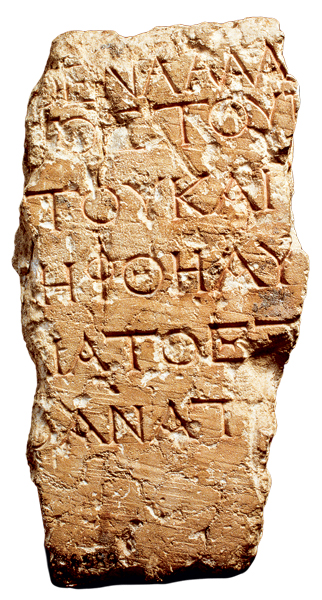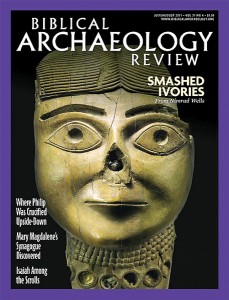Strata: Inscriptions Show Ancient Jerusalem Was a Global City

Walking through the streets of Jerusalem today, one hears a myriad of languages: Hebrew and Arabic, of course, but also English, French, German and Russian. Modern Jerusalem is a city with an international flavor.
Perhaps not surprisingly, the epigraphic record shows that this was true also in antiquity, especially during the Hellenistic, Roman and Byzantine periods (fourth century B.C.E. to seventh century C.E.) when foreign languages like Greek and Latin were used alongside, and sometimes even supplanted, the local Hebrew and Aramaic that were spoken (and written) in Judea. Even before the destruction of the Jerusalem Temple in 70 C.E., for example, Greek was commonly used for public inscriptions, such as the signs warning Gentiles not to enter the inner court of the Temple (a fragmentary example found in Jerusalem in 1935 is shown above). Hebrew and Aramaic were used primarily for informal, private inscriptions, such as those that often adorned Jewish burial boxes, or ossuaries.
Already a library member? Log in here.
Institution user? Log in with your IP address.

